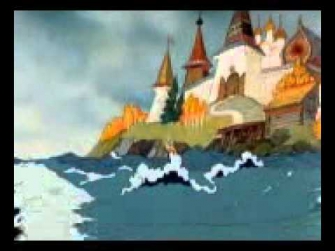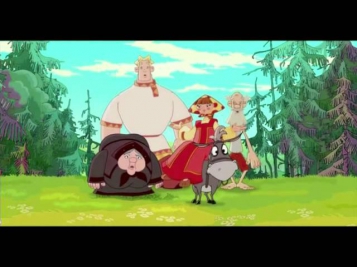)Самая популярная песня вчерашнего вечера! полный разрыв Venus
Mercury is the smallest and closest to the Sun of the eight planets in the Solar System,[a] with an orbital period of about 88 Earth days. Seen from the Earth, it appears to move around its orbit in about 116 days, which is much faster than any other planet. This rapid motion may have led to it being named after the Roman deity Mercury, the fast-flying messenger to the gods. Because it has almost no atmosphere to retain heat, Mercury's surface experiences the greatest temperature variation of all the planets, ranging from 100 K −173 °C; −280 °F at night to 700 K 427 °C; 800 °F during the day at some equatorial regions. The poles are constantly below 180 K −93 °C; −136 °F. Mercury's axis has the smallest tilt of any of the Solar System's planets about 1⁄30 of a degree, but it has the largest orbital eccentricity.[a] At aphelion, Mercury is about 1.5 times as far from the Sun as it is at perihelion. Mercury's surface is heavily cratered and similar in appearance to the Moon, indicating that it has been geologically inactive for billions of years.
Mercury does not experience seasons in the same way as most other planets, such as the Earth. It is locked so it rotates in a way that is unique in the Solar System. As seen relative to the fixed stars, it rotates exactly three times for every two revolutions[b] it makes around its orbit. As seen from the Sun, in a frame of reference that rotates with the orbital motion, it appears to rotate only once every two Mercurian years. An observer on Mercury would therefore see only one day every two years.
Because Mercury's orbit lies within Earth's orbit as does Venus\'s, it can appear in Earth's sky in the morning or the evening, but not in the middle of the night. Also, like Venus and the Moon, it displays a complete range of phases as it moves around its orbit relative to the Earth. Although Mercury can appear as a very bright object when viewed from Earth, its proximity to the Sun makes it more difficult to see than Venus.
Venus is the second planet from the Sun, orbiting it every 224.7 Earth days. The planet is named after the Roman goddess of love and beauty. After the Moon, it is the brightest natural object in the night sky, reaching an apparent magnitude of −4.6, bright enough to cast shadows. Because Venus is an inferior planet from Earth, it never appears to venture far from the Sun: its elongation reaches a maximum of 47.8°. Venus reaches its maximum brightness shortly before sunrise or shortly after sunset, for which reason it has been referred to by ancient cultures as the Morning Star or Evening Star.
Venus is a terrestrial planet and is sometimes called Earth's "sister planet" because of their similar size, gravity, and bulk composition Venus is both the closest planet to Earth and the planet closest in size to Earth. However, it has also been shown to be very different from Earth in other respects. It has the densest atmosphere of the four terrestrial planets, consisting of more than 96% carbon dioxide. The atmospheric pressure at the planet's surface is 92 times that of Earth's. With a mean surface temperature of 735 K 462 °C; 863 °F, Venus is by far the hottest planet in the Solar System. It has no carbon cycle to lock carbon back into rocks and surface features, nor does it seem to have any organic life to absorb it in biomass. Venus is shrouded by an opaque layer of highly reflective clouds of sulfuric acid, preventing its surface from being seen from space in visible light. Venus may have possessed oceans in the past, but these would have vaporized as the temperature rose due to a runaway greenhouse effect. The water has most probably photodissociated, and, because of the lack of a planetary magnetic field, the free hydrogen has been swept into interplanetary space by the solar wind. Venus's surface is a dry desertscape interspersed with slab-like rocks and periodically refreshed by volcanism. -
Название песни: Venus
Исполнитель: )Самая популярная песня вчерашнего вечера! полный разрыв
Длина файла: 03:19
Дата добавления: 2015-02-06
Текст просмотрен: 723
Рейтинг: 0
Goddess on the mountain top
Burning like a silver flame
The summit of beauty and love
And Venus was her name
Припев
She's got it
Yeah, baby, she's got it
I'm your Venus, I'm your fire
At your desire
Well, I'm your Venus, I'm your fire
At your desire
Her weapons were her crystal eyes
Making every man a man
Black as the dark night she was
Got what no-one else had
Wa!
Припев
She's got it
Yeah, baby, she's got it
I'm your Venus, I'm your fire
At your desire
Well, I'm your Venus, I'm your fire
At your desire
Goddess on the mountain top
Burning like a silver flame
The summit of beauty and love
And Venus was her name
Припев
She's got it
Yeah, baby, she's got it
I'm your Venus, I'm your fire
At your desire
Well, I'm your Venus, I'm your fire
At your desire
- Популярная песня в Турции - Hadise - Dum Tek Tek
- популярная песня - две ладошки
- Shocking Blue - Venus
- Lady Gaga - Venus (AGARES artRAVE: The ARTPOP Ball Tour edit)
- Яковлев-та самая песня))) - ты такая смешная... пупок торчком..
- Самая популярная немецкая песня - Vogerltanz( Ententanz)
- Популярная песня 2014 года!:D - Давай антистрес!:D
- Самая лучшая песня,41 г.--45 г. - Про войну.День победы!
- популярная песня биг тайм раш - lf
- Самая популярная песенка( 6 Б поймет) - Baila Baila Comigo
- Абба - I"m your Venus
- Самая популярная Китайская Песня - Маленькое яблоко (The Little Apple) - Soundvor.ru
- любимая самая песня - про владу мою хорошую
- Shocking Blue - Venus - Шисгарес
- Patricia Kaas - Venus des abribus /французский шансон/бомба 90-х

































